This year marks 100 years since the Russian Revolution of October 1917. Contemporary Chinese artist Cai Guo-Qiang, who designed the fireworks for the Beijing Olympics, opens his first solo exhibition “Cai Guo-Qiang: October” in commemoration of the occasion at The Pushkin State Museum of Fine Arts, Moscow, Russia. The renowned artist crafted a series of powerful, evocative works specifically for the event and space in an attempt to create a transformational experience for their audience, in reminiscence of the historical significance as well as the progress Russia has made until today.
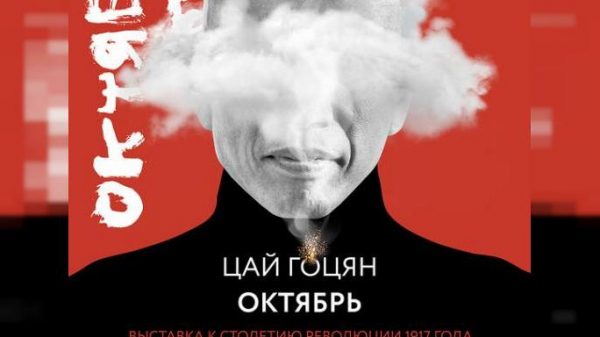
With ‘October’, an exhibition which is comprised of large-scale outdoor and indoor installations, small-scale sculptures and drawings, gunpowder paintings and an indoor video projection, Cai Guo-Qiang does not deviate from his usual bold mediums such as gunpowder, images and involvement of local participants and dramatic installations. He continues to experiment in new ways through his primal artistic expression to deliver a range of new and fresh works which makes the show all the more special and anticipated.
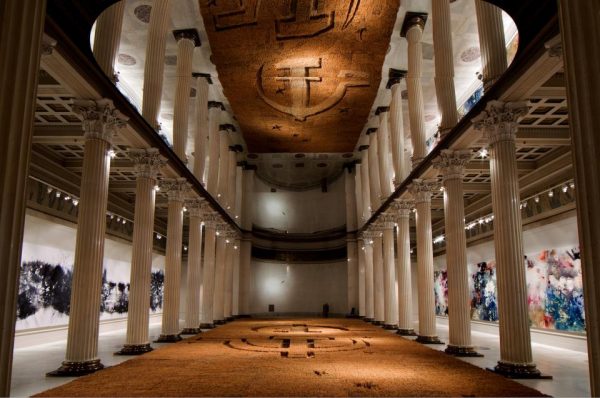
Upon stepping into the courtyard of the museum, visitors are immediately greeted by a large-scale outdoor installation towered right in front of the entrance. The giant heap made of birch trees and saplings piled up on the foundation of donated baby cradles, cribs and strollers constructs a 16m-high mountain that makes a lasting first impression. If the size weren’t enough, the leaves that will yellow and fall over the course of the exhibition stands as an incredible transformative structure, leaving visitors a breathtaking view even on return visits.
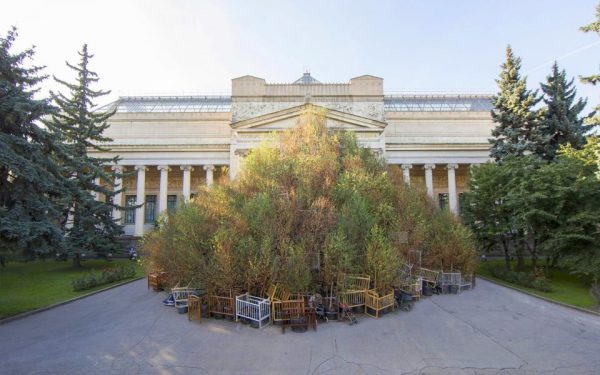
With expectations raised, viewers will not be disappointed to see another large-scale installation inside the main building itself as they ascend the central staircase to the White Room, hovering above them a poetic yet bold message in the form of gunpowder calligraphy on a 20m-long piece of smooth white silk. Titled The Sound, the words write a cautionary lyric from The Internationale: “There are no supreme saviors: neither God, nor tsar, nor hero!”, screaming and ringing through the hall as if almost audible because of its massive scale.
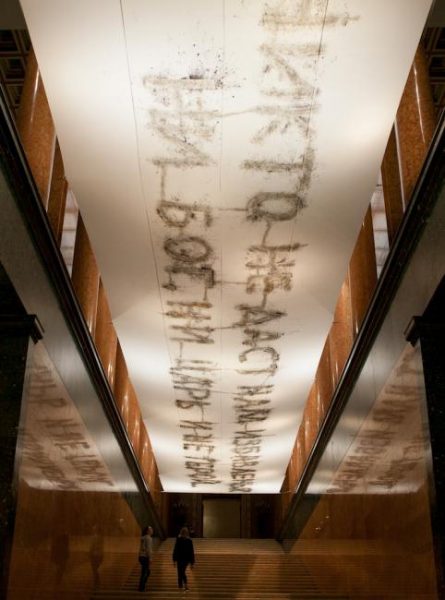
The view in the White Room must be the most grandiose of all the rooms.
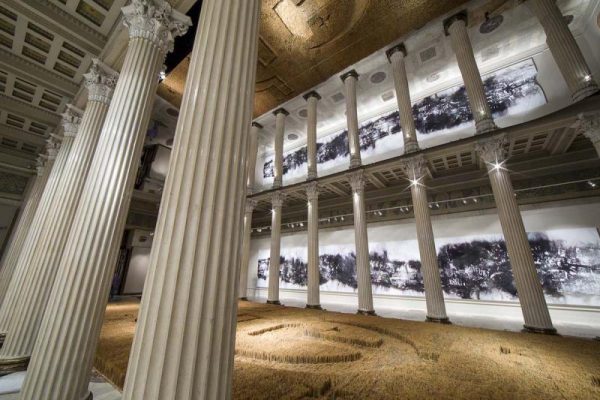
Decked with mirrors for ceilings, the space extends above and beyond, making the room look larger than it already is. Lying between two rows of pillars that emulated the classical architecture of the building, Cai Guo-Qiang’s work Land fills the center of the room with almost three million stalks of golden reeds and symbols that are shaped in the form of what looks like the Soviet Union symbol – a hammer and a sickle, and stars – apparent only through the reflection of the mirrors above. The intention was to recreate a sense of mystery inspired by the ones in Soviet films and Russian paintings of the artist’s childhood.

Flanked on each side by the majestic installation that is Land, are two 20m-long gunpowder paintings River and Garden that fit the facing walls perfectly. If viewers look closely and carefully enough, they will be able to make out several images of civillians imbued within the monochromatic gunpowder disarray in River, echoing their turbulent history during the Revolution. Facing the work on the opposite side of the room, is a more vibrant and colourful piece depicting a fantastical Garden filled with poppies, carnations and Soviet posters. The deliberate juxtaposition and inverse illusion are also set to encourage viewers to contemplate their own relationships with the works.

“The exhibition, dedicated to the Centenary of the Revolution, will be created in the form of a dialogue between contemporary art and the architecture of a classical museum, a finished work and the history of its creation, past events and the hopes of today, ” says Marina Loshak, Director of The Pushkin State of Museum of Fine Arts.
The exhibtion continues until 12 November, 2017 at The Pushkin State Museum of Fine Arts, Moscow, Russia.
*article extracted from online
